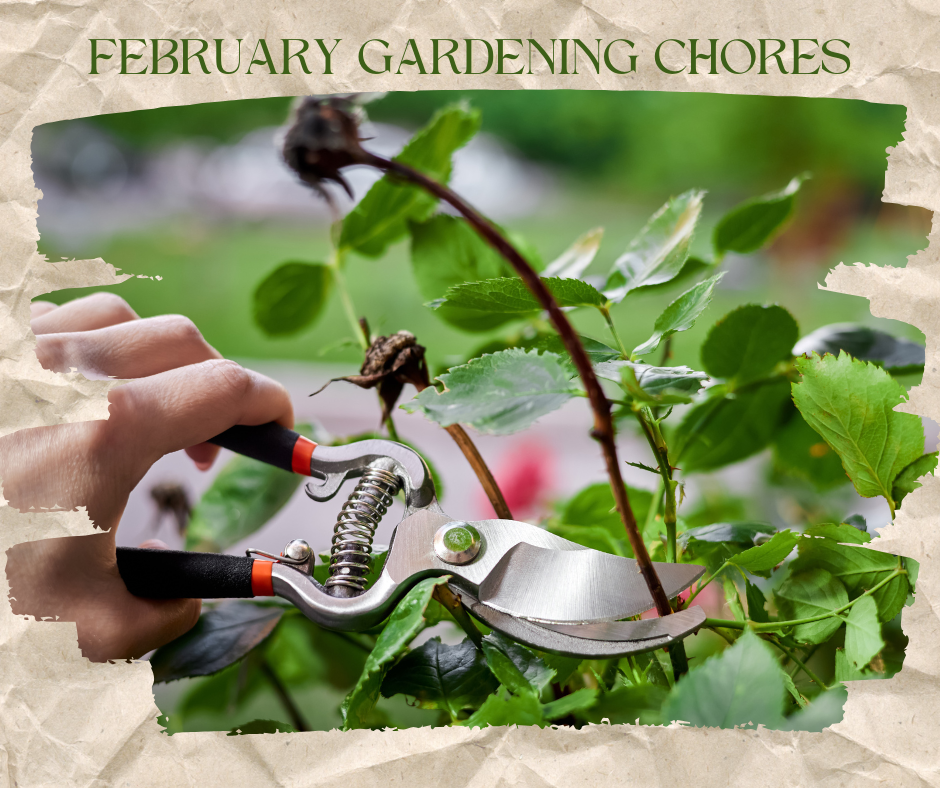Garden Chores for February
go.ncsu.edu/readext?1055127
en Español / em Português
El inglés es el idioma de control de esta página. En la medida en que haya algún conflicto entre la traducción al inglés y la traducción, el inglés prevalece.
Al hacer clic en el enlace de traducción se activa un servicio de traducción gratuito para convertir la página al español. Al igual que con cualquier traducción por Internet, la conversión no es sensible al contexto y puede que no traduzca el texto en su significado original. NC State Extension no garantiza la exactitud del texto traducido. Por favor, tenga en cuenta que algunas aplicaciones y/o servicios pueden no funcionar como se espera cuando se traducen.
Português
Inglês é o idioma de controle desta página. Na medida que haja algum conflito entre o texto original em Inglês e a tradução, o Inglês prevalece.
Ao clicar no link de tradução, um serviço gratuito de tradução será ativado para converter a página para o Português. Como em qualquer tradução pela internet, a conversão não é sensivel ao contexto e pode não ocorrer a tradução para o significado orginal. O serviço de Extensão da Carolina do Norte (NC State Extension) não garante a exatidão do texto traduzido. Por favor, observe que algumas funções ou serviços podem não funcionar como esperado após a tradução.
English
English is the controlling language of this page. To the extent there is any conflict between the English text and the translation, English controls.
Clicking on the translation link activates a free translation service to convert the page to Spanish. As with any Internet translation, the conversion is not context-sensitive and may not translate the text to its original meaning. NC State Extension does not guarantee the accuracy of the translated text. Please note that some applications and/or services may not function as expected when translated.
Collapse ▲by Eleanor Moyer, Clay County Master Gardener Volunteer
Here it is the middle of February, but after our brief spring-like weather,
there is lots to do:
Prune and shape shade trees and SUMMER flowering shrubs. Spring
bloomers should be pruned after they flower.
Roses should be pruned now that leaf buds have emerged. Hybrid teas
should have three or four strong canes. Landscape roses (like Knockouts)
should be cut about 1/3, all about the same length. Remove all dead,
damaged, crossing, and inward-facing limbs. Roses benefit from pruning.
Keep after winter weeds.
Apply fertilizer to cool season grasses using 1 lb. of nitrogen per 1,000 feet.
Get your lawnmower ready for the season, making sure to clean and
sharpen the blades.
After our warm week, now is the time to force branches of forsythia, pussy
willow, and quince indoors. Place stems in warmish water near a sunny
window.
Begin planting fruit trees, grapevines, and asparagus crowns. 4-H has their
annual sale now through March 14. Contact Kiffney Stokes at the
Extension Office (828-389-6305) or (kiffney.stokes@NCSU.edu).
Finish planning for spring and summer. Orders seeds and nursery stock
while supplies are available. Put the Master Gardener plant sale on your
calendar: May 2-4.
Turn over cover crops on garden beds if used. Get your soil tested. Add
lime, compost, and fertilizer as the test results indicate. The Extension
Office has all the supplies needed for soil tests in the various locations on
your property.
By the end of the month, start seeds under grow lights.
Plant sugar snap peas, garden peas, onion sets, and radishes toward the
end of the month.
Clean out birdhouses. Be sure to dispose of old nest material away from
the birdhouse.
Cut back ornamental grasses to about 12 inches. Liriope and mungo grass
can be shorn.
I’m starting to see daffodils, and that makes me want to have planted more.
So, write in your journal what bulbs and where they should be placed for
next autumn.Spiff up hellebores by removing old, tattered leaves so their flowers will be more noticeable.
Spiff up hellebores by removing old, tattered leaves so their flowers will be
more noticeable.




